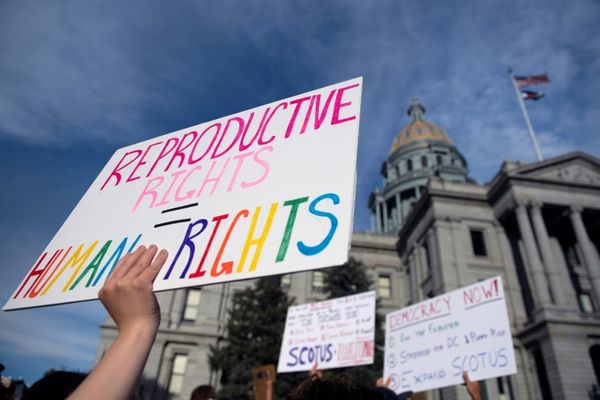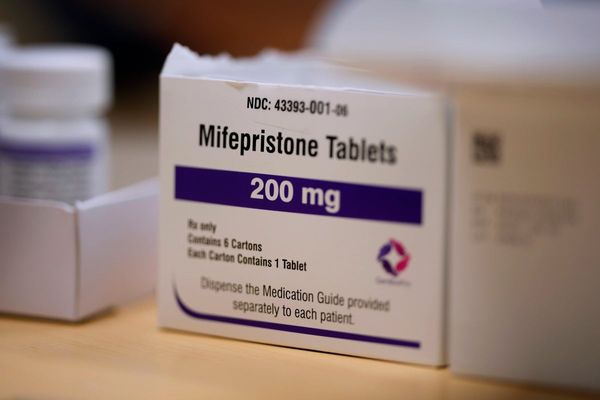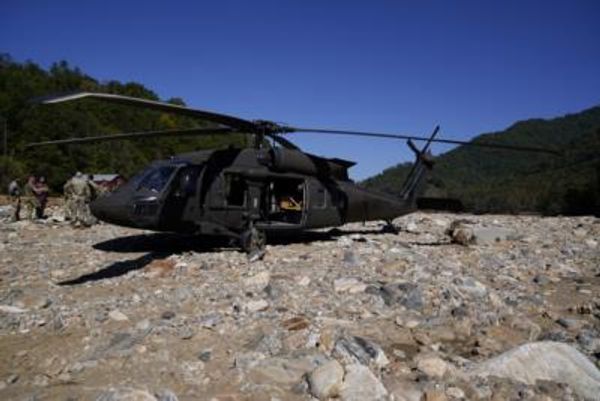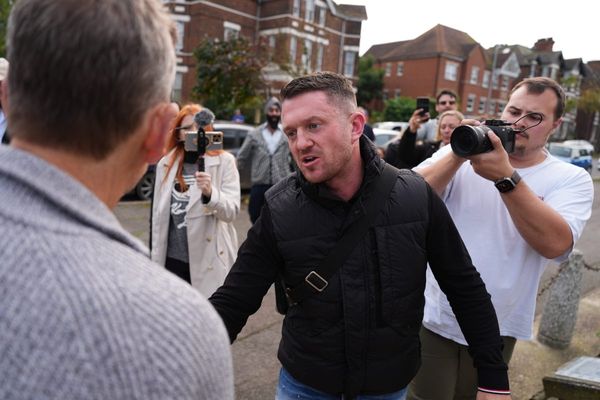You wouldn’t place an ice-cold, sweating, celebratory beverage down on a valuable painting or a classic car. So treat the restored vintage Coca-Cola vending machine sitting in Victory Lane at Charlotte Motor Speedway the same way.
Or at least, that’s the mindset Terry Kimble hopes NASCAR drivers have after they win the Coca-Cola 600, NASCAR’s longest event and one of it’s “crown jewel” races, and are given the antique machine as one of many prizes.
“They’ll have a can of beer sitting on top of the machine, and I’m thinking, ‘Get that can off the machine! That’s my machine. Get your can off that machine and don’t scratch it,’” Kimble said with a laugh.
As the restorer of the vintage Coca-Cola vending machines for NASCAR’s iconic race, the 70-year-old Grayson, Georgia resident is understandably protective of the finished product. For more than three decades, Kimble has been restoring and selling a variety of vintage memorabilia, such as pedal cars and carousel horses, and says he’s restored more than 500 vending machines, including ones from Pepsi, Dr. Pepper, 7UP and Orange Crush.
Of those 500, most have been Coca-Cola machines from the 1940s and ‘50s, he said. They’re his forte, and he’s been restoring machines presented to the Coke 600 winners since the tradition began in 2010, when Kurt Busch won the race and received the first one. (Kimble did restoration work for The Coca-Cola Company before teaming up with NASCAR and also restores Coke machines for the PGA Tour champion.)

The vintage Coke machines aren’t quite revered like some of NASCAR’s other novelty trophies, such as Bristol Motor Speedway’s gladiator sword or Martinsville Speedway’s grandfather clock. But drivers love winning a piece of Americana with the Coca-Cola 600 checkered flag, and some proudly show the machines off, outside of their trophy collections, like they do with the grandfather clocks.
“The 600 trophy is kind of unique; it’s different, the trophy itself, and then to go along with it and pair it with [the vintage Coke machine is] awesome,” said Austin Dillon, who won the 2017 race. “It was just an added bonus to winning the race, something cool. But it’s an awesome trophy to go along with everything else that goes along with winning the Coke 600.”
Martin Truex Jr. has two Coke machines after winning the 600 in 2016 and 2019. One is in his basement bar, while the other is at the Truex Management Group office. After winning the 2011 and 2013 races, Kevin Harvick has his two machines on display in his house.
“I guess you can say we received a classic piece of history for winning a classic race in historical fashion,” Truex would later say about his 2016 victory, when he set the record for most laps led in the race (392 of 400 laps). “It might have felt like a dream-kind-of win, but it was the real thing.”

What’s old can be new again
Even though Kimble is restoring the vintage machines, he said he considers himself an artist, so when it’s complete, he believes he helped create a work of art.
“It’s a painting to me,” he said.
He said he’s always had a thing for nostalgia and Americana, and one day, he came across a vintage Coca-Cola machine. He thought it was stunning. It was unlike anything he had ever seen before, and he immediately became hooked.
So in 1989, Kimble said he retired from the Atlanta Police Department, and by 1990, he had opened his Georgia shop, Remember When Collectibles, and began selling and restoring memorabilia. Eventually, it was renamed to Remember When Restorations, as Kimble decided to focus on refurbishing Coke and other pop vending machines.
More than 30 years later, Kimble has sent restored machines all over the world to cities such as Moscow, Istanbul and London and even restored two for President Jimmy Carter, he said.
“I always compare a Coke machine or soda machine to a classic car, the vintage cars,” he said. “They’re made out of metal. They have a paint job. They have motors. They perform a function.”

It takes about six weeks to completely restore a Coca-Cola machine, Kimble said, and he often works with a small team to get the job done. When it’s time to begin restoring one for the Coca-Cola 600, he goes to his warehouse stocked with vintage machines and carefully selects one that differs enough from the previous year’s trophy.
And the restoration process is intense and tedious, but delicate at times.
Kimble said he starts by completely disassembling the machine — including taking out and replacing all the insulation and the refrigeration system — and restores the internal parts and replaces any necessary pieces.
To remove paint, rust and anything else attached to the antique, the machine is sandblasted with garnet (because it’s better for the metal, he said), and a coat of automotive red paint is applied. If needed, some parts are re-chromed and polished. He also has an artist on staff who specifically repaints the embossed Coca-Cola letters on the outside of the machine, he said.
The machine the winner of the 2021 Coca-Cola 600 will receive is from 1949. It’s white on top, and the remaining two-thirds of it is a vibrant red with “Drink Coca-Cola” written in embossed letters on the front, Kimble said. The drum inside it holds 39 bottles for a steep price of a dime each.
Once the machine is painted and reassembled, Kimble adds some embellishments to enhance the final product’s authenticity.
“I personally put decals on it, just like the originals,” he said. “I don’t deviate away from originality because it’s like a classic car. You don’t want to pinstripe a classic car or put decals on it that don’t belong just to make it look pretty. I’m very particular about authenticity because if you do things authentic, then they hold their value. They even go up in value every year.”
Early on in his restoration career, Kimble would buy vintage machines for $200 to $400 apiece, and they’re worth up to $2,000 now, he said. On eBay, old Coke machines are currently for sale for up to $9,800.
‘A pretty sweet trophy’
When Kimble completes the restoration process, the vintage Coke machines are totally functional, and some NASCAR drivers take advantage of that.
Brad Keselowski, who won the 2020 Coca-Cola 600, keeps his machine fully stocked with glass bottles and on display with his car collection at Keselowski Advanced Manufacturing in Statesville, North Carolina. Positioned across from his 2012 Cup Series championship-winning car, he often offers bottles to his visitors.
To the victor go the spoils. 💍@keselowski | @Team_Penske pic.twitter.com/b4x1Xg6vPL
— Charlotte Motor Speedway (@CLTMotorSpdwy) May 25, 2021
“That one’s super cool; I wish I had one,” Joey Logano said after noticing Keselowski, his teammate, posing with his Coke Machine. “I saw Brad take a picture of his or something this week on his social [media accounts] and I thought, ‘Man, I want that.’ I was a little jealous. …
“So that’s definitely, to me, a unique, little gift and something that you’ll most likely have the rest of your life and have a really cool story behind it of how you got it.”
Before Truex won the 2016 Coca-Cola 600, he had no idea the vintage Coke machine was for him and not just for post-race photos. Before Dillon won the 2017 race — the first checkered flag of his career — he didn’t either.
“Then afterwards, obviously, it was in Victory Lane, and I was pumped,” Dillon said. “All vintage Coke stuff’s pretty cool, and [I] feel like there’s huge collectors out there of Coke memorabilia, and I’ve got a pretty sweet trophy there with the throwback fridge.”

Despite Kimble’s love for the restoration process, he said his favorite part is when the Coca-Cola 600 winner drives the car into Victory Lane, and his machine is on display for everyone in the grandstands and at home to see. He said he feels like he was “destined” to restore old machines, and in his 12th year doing this for NASCAR, he has no intention of retiring.
“They talk to me,” Kimble said about the Coke machines. “All the chrome and the automotive paint, some of them light up. They’re actually beautiful machines when they’re finished.”







